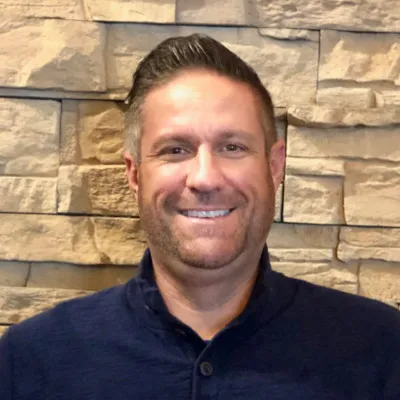When Troy Teepe worked on construction jobsites earlier in his career, he says he didn’t always follow safety protocols to a T. Today, he likens the confidence workers develop that causes them to skip safety measures to playing the lottery.
Teepe’s grandfather started a plumbing company in the 1950s, which eventually expanded into heating, ventilation and mechanical work. When he joined the business, Teepe started working on bigger commercial projects like hotels and schools.
Fifteen years ago, he transitioned to the safety side of the industry, and now Teepe is vice president of safety for global insurance and tech company Charles Taylor. His work brings him out into the field often, helping safety directors for companies or assisting firms with creating their own programs.
Here, Teepe talks with Construction Dive about recent safety trends, how industry leaders are raising the bar and what contractors can do to catch up.
The following has been edited for brevity and clarity.
CONSTRUCTION DIVE: What is a safety lapse you’re seeing in the industry that needs addressing?
TROY TEEPE: I think what we see the most industrywide is people chasing from behind. To get the work nowadays and to be on larger projects, you have to be driven with a strong safety culture. We're seeing companies out there, if they want to work, they're doing everything right from the productivity side, but the safety is not there. They’re just being reactive rather than proactive to the situation.
I think that's where we see the biggest problems: People just aren't prepared for what the expectations are in the construction industry nowadays.
That is a relatively new thing in terms of lagging behind. The expectations have moved up and maybe the practices of some companies haven't kept up. I would say in the last five years, it's really ramped up. Large general contractors have gone well above and beyond the OSHA requirements and they want a safe work site, they want a work site that is free of risk if at all possible.
So, if I’m a contractor that’s behind, how can I catch up?
Meeting the requirements can seem like a big headache. But it’s all about hiring the right person or consultant who knows how to handle those situations to get you on the right track.

I think the challenge becomes an overwhelming task for people who don’t know how to do it. If you own your own construction company, what are you most focused on? You’re not most focused on your OSHA 300 logs, you’re out there focused on getting as much work as you can get and having the manpower to do that work. And that’s where safety gets left behind.
So, you have to really start and build a foundation. You have to understand if you want to get to a good safety culture, you just have to start with the basics.
How can firms create and maintain a safety culture?
If you were to visit the OSHA website, where it talks about things like a safety culture, they'll say it’s about shared beliefs and practices and attitudes that exist in an establishment and an atmosphere created by those beliefs and attitudes.
I just look at it in a more practical way. For me, it's a culture in which both the employees and management are competent and they're confident regarding safety.
And you don’t just wake up today and have that happen. That is something you have got to work toward. You have to have a leadership commitment that sets a tone for the entire organization.
Are industry leaders’ higher expectations going to have a prolonged impact?
Yeah, I think so. If you look at OSH Act of 1970 to where we are nowadays 50-plus years later, the incident rates that have gone down since then, I’ve seen it driven from that required compliance. We now have this expectation of compliance to work on these jobsites and to be able to even bid on the work for the jobsites. So, if you factor that in, it is going to keep driving incident rates down.
An accident or an incident in the workplace, it’s not something that just happens. There’s a cause. There’s a reason. There’s human behavior behind it. There’s a difference between whether an incident is controllable or in rare cases, uncontrollable.
But I can tell you, in all of the investigations I’ve done, there’s always been a reason for it, and it’s usually because a protocol wasn’t followed.
Is that human error most often from overconfidence or from ignorance?
I've worked with a lot of young safety professionals and I always tell them when they go on a jobsite to remember when you see something, so their eyes are trained to look at what the code of federal regulation standards say in the construction industry.
Sometimes people look at things and say, “Well this is plain ignorant,” and I tell them to try to see that as a different view. Let’s find out the reason why. How much training have they had? How much drive does their company put into the safety culture?
And when you start asking those questions, a lot of times I’m not surprised to find out the training hasn’t been great. I’ve run into people who have sat through training but it hasn’t been in their native language. It doesn’t give them the training they need. I see that all the time, fall protection especially, people wearing their equipment wrong and they don’t know better.
And then there are people who have the training and just completely decide to disregard it.
If you continue to do things wrong all the time and take shortcuts, you can get away with it for a very long time. But eventually it will catch up with you.














